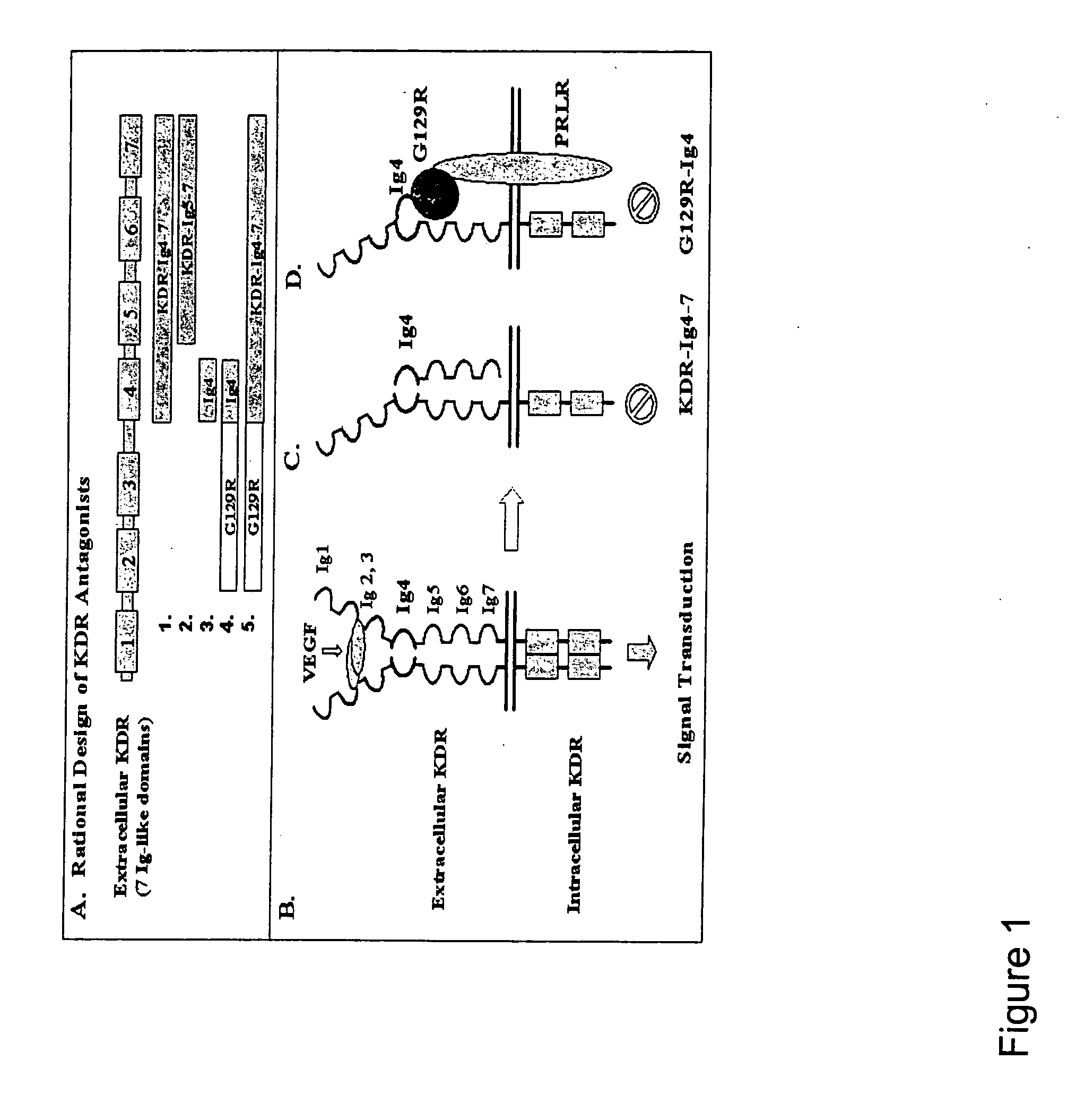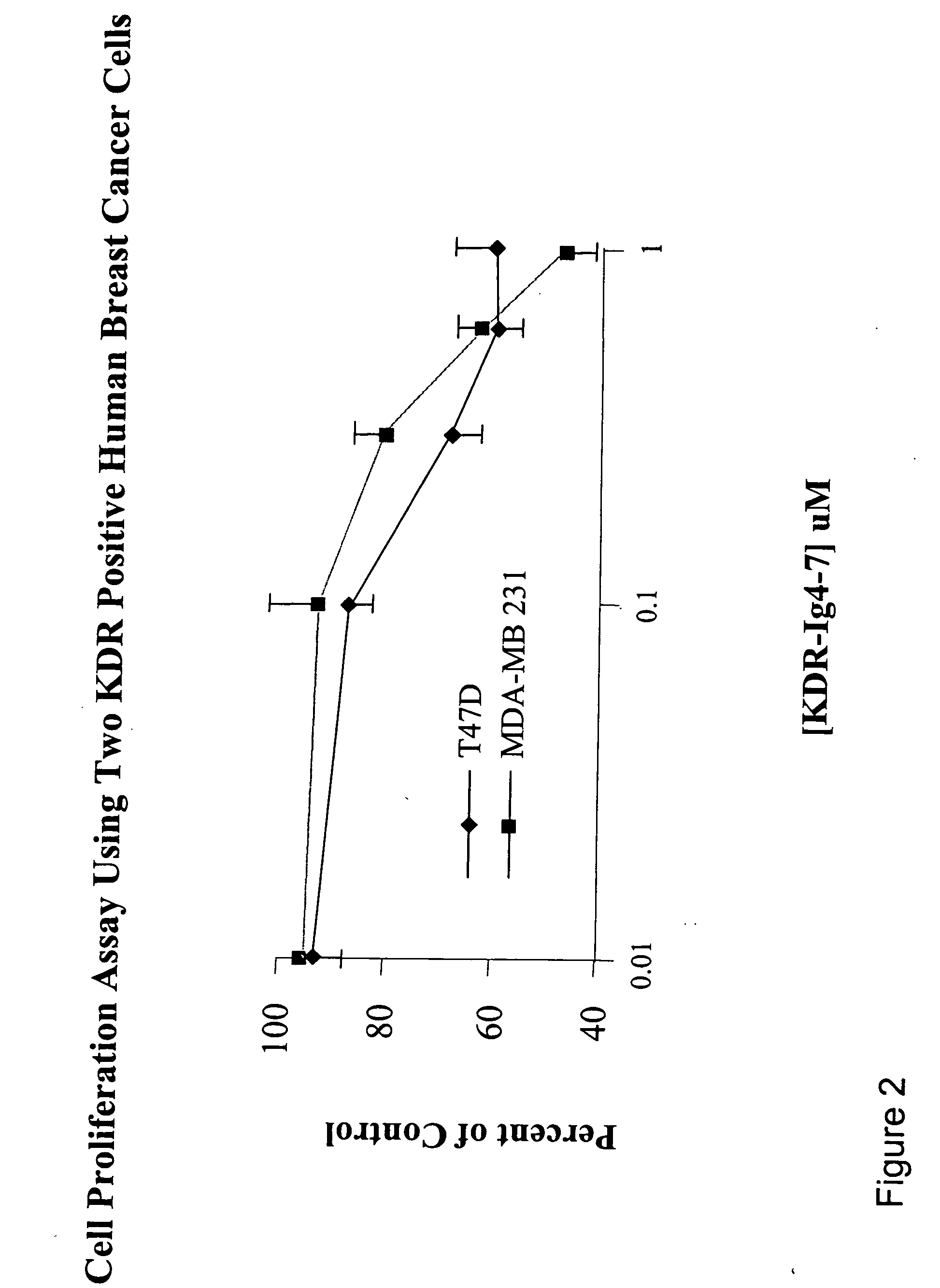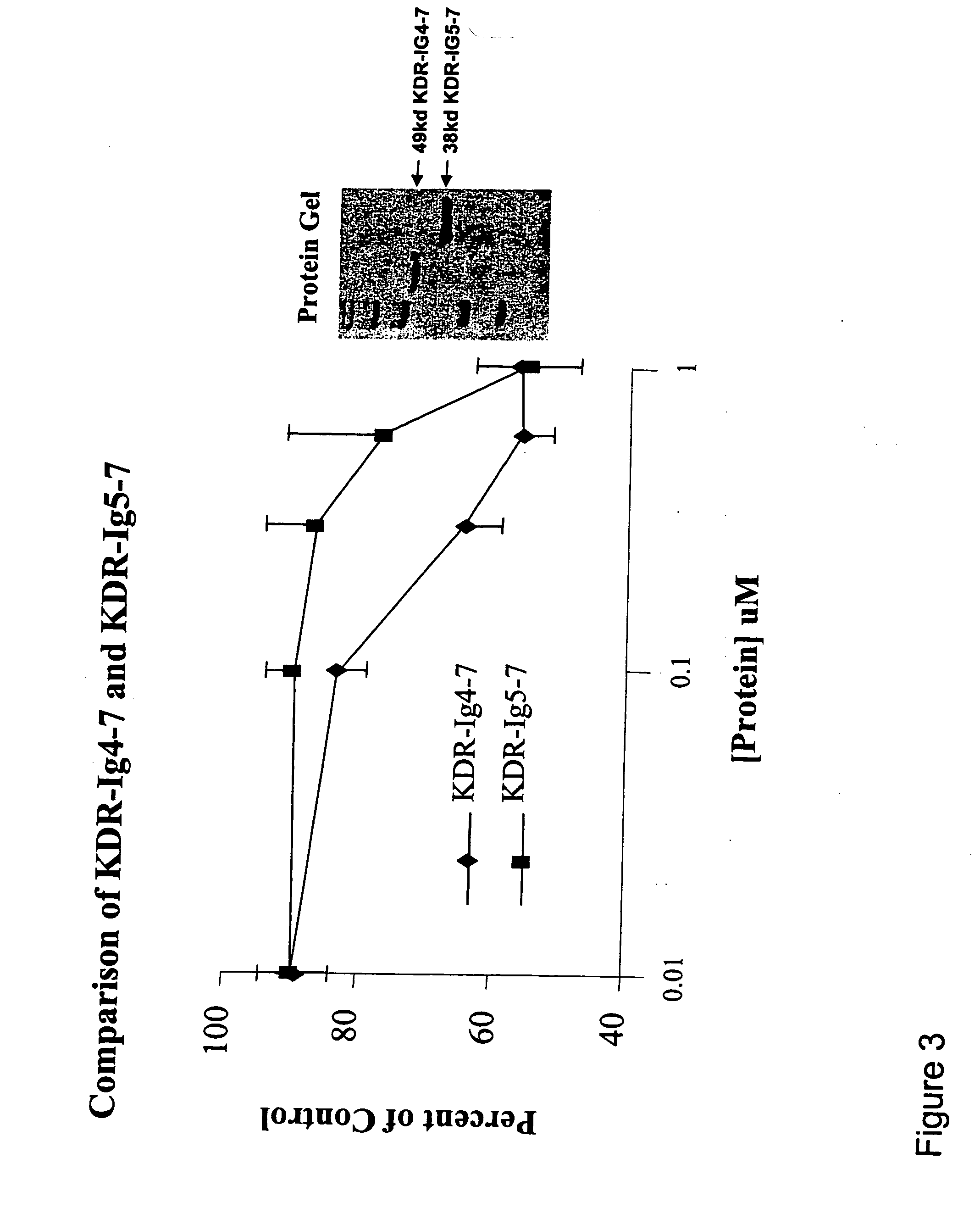VEGF receptor antagonists
a technology of vascular endothelial growth factor and receptor antagonist, which is applied in the field of cancer therapy and angiogenesis inhibitors, can solve the problems of kdr dimerization and activation
- Summary
- Abstract
- Description
- Claims
- Application Information
AI Technical Summary
Benefits of technology
Problems solved by technology
Method used
Image
Examples
example 1
Production and Purification KDR Receptor Antagonists
[0110] Three recombinant proteins (KDR (Ig4), KDR (Ig5-7) and KDR (Ig4-7)) were produced and purified. Recombinant proteins of the present invention can be produced from E. coli. according to published protocols (Cataldo et al., Int. J. Oncol. 17: 1179-85 (2000)) with modifications.
[0111] Briefly, BL21 (DE3) cells (Novagen, Madison, Wis.) were transformed with plasmids encoding recombinant proteins using a calcium chloride method. The transformants were spread on an ampicillin plate, and grown overnight at 37° C. The LB seed culture was inoculated and grown overnight. The following day a LB growth culture was generated by inoculation of 5% of the seed culture and grown for ˜2.5 hours at 37° C. with agitation. IPTG (Fisher Scientific) was added to the culture (1 mM final concentration) to induce expression of recombinant proteins and incubated for an additional 4 hours. Bacteria was pelleted and resuspended in a solution containin...
example 2
KDR (Ig4-7) inhibited MAPK Phosphorylation in T-47D Human Breast Cancer Cells
[0112] T-47D cells were cultured overnight in serum free media at 80% confluency and were treated for 60 minutes with G129R (10 μg / ml, ˜0.5 μM); hPRL (100 ng / ml, ˜5.0 nM), and KDR (Ig4-7) (25 μg / ml, ˜0.5 μM) as compared to untreated cells (basal). Membranes were stripped and re-probed with anti-MAPK antibody to ensure equal loading. Results indicate that MAPK phosphorylation decreased in the presence of KDR (Ig4-7) compared to control samples. Thus, KDR (Ig4-7) blocks the ability of a full length KDR monomer to form a functional homodimer and effect VEGF signaling (FIG. 5).
example 3
KDR (Ig4-7) and KDR (Ig5-7) Decreased Cell Proliferation in a Breast Cancer Cell Line
[0113] The cell proliferation assay was performed according to Beck et al. (2003) (supra). MDA-MB 231 or T-47D cells (which are KDR positive cell lines) were grown in medium free of phenol-red. Fully confluent MDA-MB 231 and T-47D cell cultures were trypsinized and resuspended in a medium containing 5% fetal bovine serum (FBS). Cells were then seeded into 96-well culture plates at a density of 15,000 MDA-MB 231 cells / well or 15,000T-47D cells / well. After incubating the cells for 24 hours, various concentrations of tester proteins were added to the wells. Cells were further incubated for 48-72 hours at 37C in a humidified 5% CO incubator. The viability of the cells was determined using the MTS-PMS (CellTiter 96 Aqueous Kit; Promega Corp., Madison, Wis.) colorimetric assay according to the manufacturer's protocol. Absorbance at 490 nm was determined using a microplate reader (BioRad).
[0114] Results ...
PUM
| Property | Measurement | Unit |
|---|---|---|
| pH | aaaaa | aaaaa |
| length | aaaaa | aaaaa |
| nucleic acid sequence | aaaaa | aaaaa |
Abstract
Description
Claims
Application Information
 Login to View More
Login to View More - R&D
- Intellectual Property
- Life Sciences
- Materials
- Tech Scout
- Unparalleled Data Quality
- Higher Quality Content
- 60% Fewer Hallucinations
Browse by: Latest US Patents, China's latest patents, Technical Efficacy Thesaurus, Application Domain, Technology Topic, Popular Technical Reports.
© 2025 PatSnap. All rights reserved.Legal|Privacy policy|Modern Slavery Act Transparency Statement|Sitemap|About US| Contact US: help@patsnap.com



